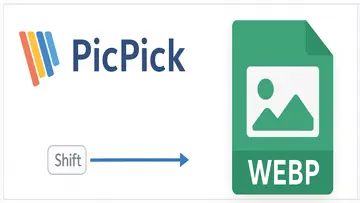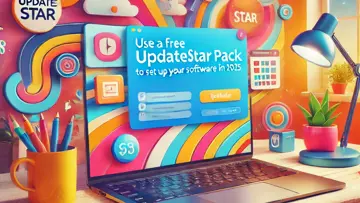Empower Your Geospatial Data Management with GDAL
GDAL is a powerful open-source translator library for raster and vector geospatial data formats, providing extensive functionality for geographical data processing and analysis.
Overview of GDAL
GDAL, short for Geospatial Data Abstraction Library, is an open-source software library that provides a wide variety of tools for translating and processing raster and vector geospatial data. Developed by Frank Warmerdam, GDAL is an essential tool for professionals in the fields of geography, cartography, GIS (Geographic Information Systems), remote sensing, and more. With its powerful capabilities, GDAL allows users to read, write, and manipulate geospatial data in various formats.
Key Features
- Format Support: GDAL supports a multitude of raster and vector formats such as GeoTIFF, Shapefile, KML, and many more. This extensive format support makes it an invaluable tool for users dealing with different types of geospatial data.
- Data transformation: The library includes tools for transforming coordinate systems, resampling, and warping raster data to align with different projections.
- Command-line Utility: GDAL offers a command-line interface (CLI) with various utilities that facilitate operations on geospatial data without needing to write custom code.
- API Access: Developers can access GDAL through programming languages such as C++, Python, and Java. This feature enables the integration of GDAL into custom applications.
- Raster and Vector Processing: GDAL provides capabilities for manipulating both raster and vector datasets, allowing users to apply various algorithms and processes to their data.
- Community and Documentation: With robust community support and detailed documentation, users can easily find help, tutorials, and guides to maximize their use of the library.
Installation Process
The installation of GDAL varies depending on the operating system. Below are some general steps for different platforms:
- Windows:
- Download precompiled binaries from the official GDAL website or use package managers like OSGeo4W.
- Add the GDAL installation directory to your system's PATH variable for command-line access.
- macOS:
- You can install GDAL via Homebrew by running the command: brew install gdal.
- This method ensures that any dependencies are automatically managed.
- Linux:
- GDAL can typically be installed using the package manager for your distribution. For example: sudo apt-get install gdal-bin on Debian-based systems.
- Alternatively, compile from source to customize your installation if necessary.
User Interface
GDAL primarily operates through CLI commands; however, there are several graphical user interface (GUI) options available that integrate with GDAL to enhance user experience. Popular GIS applications such as QGIS utilize GDAL libraries in their back-end processing while providing user-friendly interfaces where geospatial tasks can be executed visually.
Applications of GDAL
The versatility of GDAL makes it suitable for various applications across industries. Some of its common use cases include:
- Geospatial Data Conversion: Users often utilize GDAL to convert datasets between different formats swiftly. For instance, converting a shapefile into GeoJSON format or rasterizing vector data.
- Remote Sensing Analysis: Researchers process satellite imagery using GDAL tools to extract valuable insights such as land-use change detection or spectral analysis.
- Mosaic Creation: Users can create color-balanced mosaics from multiple raster files using GDAL’s mosaic utility functions.
- Cropping and Resampling: The capability to crop raster datasets or resample them is crucial for scene analysis or preparing data for modeling tasks.
Performance
The performance of GDAL is generally very efficient due to its ability to handle large datasets without consuming significant system resources. It employs optimized algorithms that speed up data processing tasks. Moreover, its architecture allows concurrent processing of multiple threads when executing certain operations, proving beneficial for large-scale geospatial analyses.
Caveats
Despite its robust capabilities, users should be aware of some limitations and learning curves associated with the use of GDAL:
- Complexity: For beginners in geospatial analysis or programming, mastering the command-line interface may feel daunting at first due to its command structure.
- Error Handling: Troubleshooting errors during data processing might require a deeper understanding of geospatial concepts and computer science principles.
Community Support and Resources
The open-source nature of GDAL has fostered a thriving community dedicated to improving the library's functionalities. Key resources include:
- Official GDAL Website: This site contains comprehensive documentation along with download links for various platforms.
- GIS Stack Exchange Forum: A platform where users can ask questions and share knowledge about geospatial analysis using GDAL.
- GitHub Repository: Users can access source code, report issues, or contribute directly to the development of GDAL from this repository.
The Geospatial Data Abstraction Library (GDAL) remains among the most powerful tools in the domain of geospatial data processing. Its extensive format support and diverse capabilities make it a go-to solution for GIS analysts and developers alike. By bridging various formats and allowing seamless manipulation of spatial datasets, GDAL stands out as a cornerstone in modern geospatial technology. With ongoing contributions from its user community, it continues to evolve while meeting the changing needs of professionals across various sectors.
Overview
GDAL is a Open Source software in the category Development developed by Frank Warmerdam.
The latest version of GDAL is currently unknown. It was initially added to our database on 10/16/2009.
GDAL runs on the following operating systems: Windows.
GDAL has not been rated by our users yet.
Pros
- Supports a wide variety of raster and vector geospatial data formats
- Robust library with a large community of users and developers
- Highly versatile with many powerful capabilities for geospatial data manipulation and analysis
- Cross-platform compatibility, with support for Windows, macOS, and Linux
Cons
- Not user-friendly for beginners without prior knowledge of geospatial concepts or software development
- Steep learning curve due to its complexity and vast array of functionalities
- Documentation can be lacking or difficult to navigate at times
- Performance can be an issue when working with very large datasets
FAQ
What is GDAL?
GDAL (Geospatial Data Abstraction Library) is a translator library for raster and vector geospatial data formats.
Who created GDAL?
GDAL was created by Frank Warmerdam and other contributors.
What programming languages are supported by GDAL?
GDAL is primarily written in C++, but it also provides bindings for Python and other languages.
What are some common uses of GDAL?
GDAL is used for tasks such as converting between different geospatial data formats, processing remote sensing data, and georeferencing images.
Is GDAL an open-source project?
Yes, GDAL is released under an open-source license (MIT/X license).
Can GDAL handle both raster and vector data?
Yes, GDAL can handle both raster and vector geospatial data formats.
What is the relationship between GDAL and OGR?
OGR (Simple Features Library) is a part of the GDAL project and focuses on vector data processing, while GDAL primarily deals with raster data.
Is GDAL widely used in the GIS industry?
Yes, GDAL is a widely used library in the GIS (Geographic Information System) industry due to its versatility and extensive format support.
Does GDAL provide tools for geospatial analysis?
While GDAL focuses on data translation and processing, it also provides some tools for basic geospatial analysis tasks.
How can I contribute to the GDAL project?
You can contribute to the GDAL project by reporting issues, submitting patches, or participating in discussions on the mailing list or GitHub repository.

Elena Angelini
I'm Elena, your go-to software reviewer at UpdateStar and tech enthusiast. Whether you're a user seeking the latest software titles or software news I've got you covered. When I'm not diving into the latest software, you can find me exploring nature trails, camping under the stars, or competing in online multiplayer games. My reviews are designed to be fun, engaging, and packed with all the details you need to make informed decisions.
Latest Reviews by Elena Angelini
Latest Reviews
|
GS Modellbahn-Verwaltung 6D
Streamline Your Model Railway Management with GS Modellbahn-Verwaltung 6D |
|
|
|
LLVM
LLVM: The Compiler Infrastructure Revolution |
|
|
MatterControl
MatterControl: The All-in-One 3D Printing Management Software |
|
|
SignumOne
Revolutionizing Communication with SignumOne |
|
snow white solitaire charmed kingdom
Unleash Your Inner Disney Fan with Snow White Solitaire: Charmed Kingdom |
|
|
Rescue Quest Gold SE
Embark on a Charming Adventure in Rescue Quest Gold SE |
|
|
UpdateStar Premium Edition
Keeping Your Software Updated Has Never Been Easier with UpdateStar Premium Edition! |
|
|
Microsoft Visual C++ 2015 Redistributable Package
Boost your system performance with Microsoft Visual C++ 2015 Redistributable Package! |
|
|
Microsoft Edge
A New Standard in Web Browsing |
|
|
Google Chrome
Fast and Versatile Web Browser |
|
|
Microsoft Visual C++ 2010 Redistributable
Essential Component for Running Visual C++ Applications |
|
|
Microsoft Update Health Tools
Microsoft Update Health Tools: Ensure Your System is Always Up-to-Date! |





